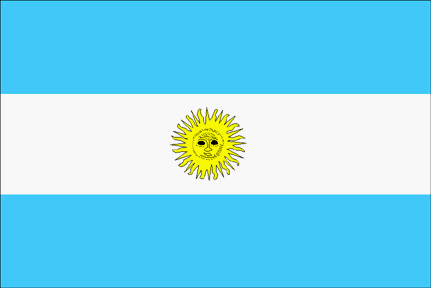





Argentina was working, at varying levels of commitment, with Egypt and Iraq on the Condor II (Egyptian designation Badr-2000) medium-range surface-to-surface missile (SSM) from 1984 until May 1991, when Argentina's minister of defense announced the project's demise. Argentina’s Condor II program was South America’s most advanced missile program of the 1980s. Iraq withdrew from the Condor II program in 1988, as its own missle program flourished and the Iran-Iraq War was ending and the exhausted state of Iraq’s resources as a result of the war. According to one Argentine press account, the missile was tested in March 1989 over a 504 km distance in Patagonia. However, according to American media reports, the first test flight was planned for 1989, and it appears that the missile was never flight tested.
The Condor II’s development technologically drew on the previous Condor I missile program established in the mid-1970s and politically from Argentina’s defeat by the British in the 1982 Falklands War. The Condor I was a single-stage, solid-fuel sounding rocket, with a range/payload capability of 100 km/400 kg, which Argentina manufactured in the late 1970s on the orders of Argentina’s ruling military junta. Argentine officials maintained that the Condor II was part of a peaceful satellite launch program, devoid of military objectives, but the project drew much attention and criticism. Britain, especially, was and remained concerned that the Condor's 1,000 km range would allow a strike on the Falkland Islands (Malvinas), while Israel continued to be concerned that the Egyptian and Iraqi ties to the project might presage its spread throughout the Middle East. Israel reportedly asked Argentina to drop Egypt from the venture and promised the delivery of twelve aircraft - said to have been embargoed in response to the Falklands War - in return.
Argentina’s defeat in the 1982 Falklands War revealed shortcomings in the Argentine Air Force, which was unable to successfully perform combat operations over 400 miles overwater and was unable to prevent the British Royal Navy from reclaiming the Falkland Islands. During the Falklands War, Argentina’s missile stockpile consisted entirely of Exocet missiles imported from France. Due to a French embargo enacted at the onset of the Falklands War, Argentina was left with a token amount of Exocets that was insufficient to fight the British with. The Condor II project was launched by the ruling military junta to both rejuvenate military pride after the war and as a potential source of income for Argentine state.
Funding for the Condor II came primarily through Egypt and Iraq and much of the missile technology was purchased illegally from Western Europe. The Condor II program fell apart after Egypt and Iraq withdrew their support and France, Italy, and West Germany, who were the European countries that supplied Argentina with missile technology, entered the Missile Technology Control Regime (MTCR) initiative established in the United States during the 1980s. The Condor II program survived the transition from the military junta back to a civilian led government, but it did not survive for too long into the 1990s. Throughout 1990 and 1991, then President of Argentina, Carlos Menem, found himself locked in a political battle against the Argentine Air Force, which did not want to cede control of the Condor II to the civilian government.
A Central Intelligence Agency (CIA) report released through the Freedom of Information Act (FOIA) in February 2005 states that as of November, 1990, President Menem had officially terminated the Condor II program. In late August of the same year, President Menem cancelled a contract with the Consen Group, which was managing the Condor II’s development for Argentina. Menem also prohibited the movement of missile production equipment throughout Argentina, despite continuing protests from Air Force officers and politicians who favored continued development of the Condor II. In early 1993 Argentina's government decided to hand over most of the components of the secretive Condor II ballistic missile project to the United States for destruction.
In March 1995, Argentine Defense Minister Oscar Camilion said that Argentina is restudying its missile program in the context of space exploration. All missile developments, indigenous or purchased from another country, would take place within the limits set by the MTCR, which Argentina joined in 1991 when it abandoned the Condor II project.
As of 2008, the technology and facilities left over from the Condor II program have been repurposed for usage in Argentina’s indigenous space launch vehicle, Tronador.
